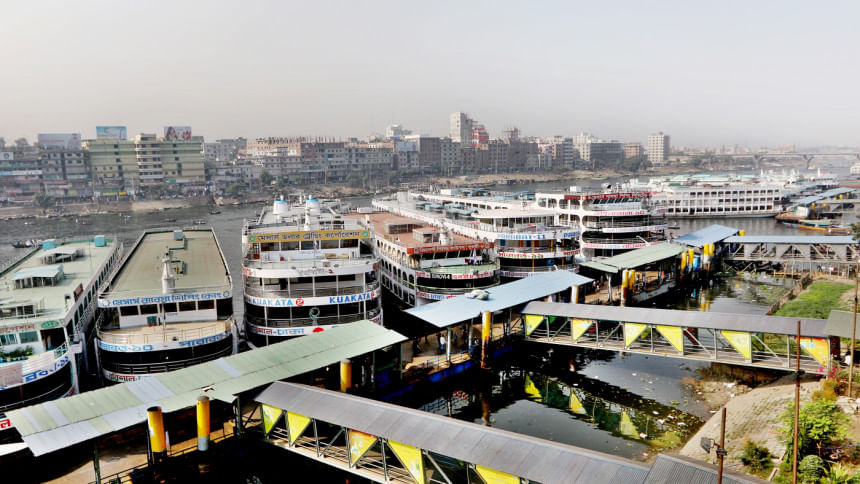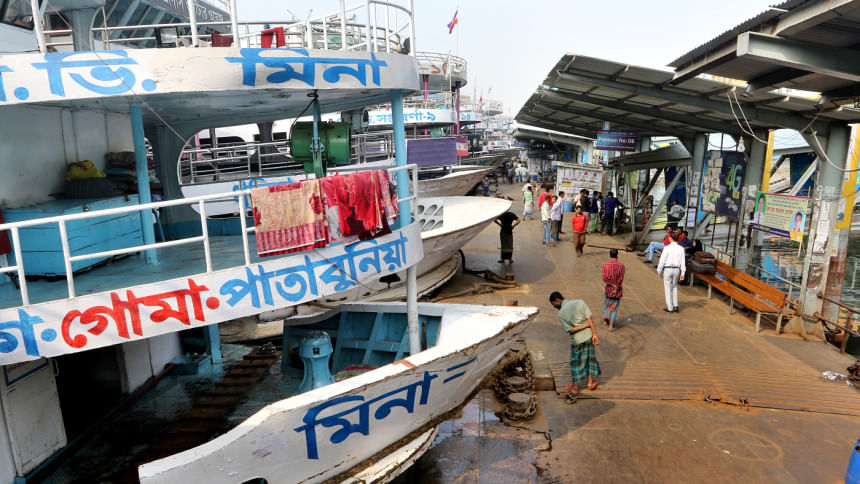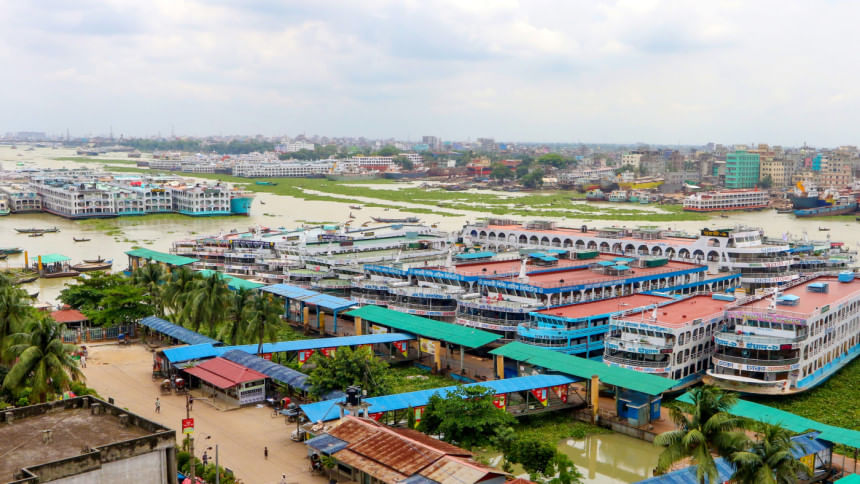Sadarghat launch terminal: Once a thriving riverport now barely afloat

Once the lifeline to Bangladesh's southern districts, Sadarghat Launch Terminal is now a shadow of its former self. With the rise of modern highways and faster road travel, the once-bustling river port is witnessing a sharp drop in passenger traffic.
As travellers increasingly opt for road-based transport, the future of the country's historic inland waterway network and its century-old launch industry hangs in the balance.
According to the Bangladesh Inland Water Transport Authority (BIWTA), the number of active launches on Dhaka's 43 river routes has fallen from 210 to 170. Of these, only 37 routes remain operational. The daily number of departures from Sadarghat has shrunk drastically from 140 to just 40-45 launches.
Several routes have been entirely shut down, including services to Madaripur, Ghuma, Patabuniya, Dewanbari, Tekerhat, Surjomoni, Rainda and Tushkhali. Barishal-bound launches, once eight per day, are now down to two. Patuakhali and Barguna have seen similar nosedives.
For the operators, it's a financial freefall.
"Since the inauguration of the Padma Bridge, the number of passengers has dropped significantly. The severe traffic congestion from Gulistan to Sadarghat and the rise in fuel prices have put this sector at serious risk," said Md Altaf Hossain, master of the launch Sundarban-16.

"On July 6, we went to Barishal with only 175 passengers, incurring a loss of over 2 lakh takas. This is how things are going. On average, we're losing around 10 lakh takas every month. This is supposed to be an off-season, but it feels like a shutdown. Since the bridge opened, things have slowed to a crawl. If this trend continues, we may not last five more years."
The impact ripples beyond launch decks to those on the shore. Porters, once part of the vibrant chaos of Sadarghat, now sit idle for hours.
"We used to earn 1,500 to 2,000 takas a day. Now, it's hard to make even 500-700 takas," said Shamim, a porter who has worked at Sadarghat for over a decade.
"Passengers and goods both are gone. Most of the day, we just sit and wait."
The downturn is stark even during peak travel periods. This year's Eid-ul-Azha rush saw 139 launches depart from Sadarghat on June 5, noticeably fewer than the 158 departures recorded during the same festival before the Padma Bridge's opening.
Mohammad Hannan Khan, treasurer of the Launch Owners' Association, said the industry is no longer sustainable. "Before the Padma Bridge, each launch operated 14 to 15 trips monthly. Now, it's down to four or five. Our monthly income has dropped from 40-50 lakh takas to just 15-20 lakh takas. Around 40 launches have already been scrapped."

With no other options, many workers are abandoning river transport altogether, shifting to other vessel types such as oil tankers, sand carriers, or even auto-rickshaws in search of stable income.
Beyond the bridge, other factors have worsened the crisis. Skyrocketing fuel prices are eating into whatever revenue remains. Launch operators say it costs between Tk 8.5 lakh and Tk 9 lakh to make a single trip to Barishal -- costs that are rarely recovered now.
Even infrastructure is working against them. The Gulistan-Sadarghat road is plagued with severe congestion, further discouraging passengers from opting for water travel.
Mahbubur Rahman, assistant director of BIWTA, emphasised the importance of fuel regulation and long-term sustainability.
"We must look into alternative energy. India has already started using solar-powered launches on some routes. Bangladesh could consider similar technology."
The Launch Owners' Association has formally appealed to the government for support. Their demands include regulation of fuel prices specific to river transport, priority decongestion of the Gulistan-Sadarghat route, and long-term subsidies or incentives to prevent mass closure of routes.

 For all latest news, follow The Daily Star's Google News channel.
For all latest news, follow The Daily Star's Google News channel. 




Comments